Anastasia Artemeva is the artist behind Prison Space, an ongoing project that investigates how art can be deployed to establish empathy and communication between incarcerated people and the public outside the prison. Arlene Tucker is the designer and artist behind Translation is Dialogue which looks at how translation processes can be harnessed to make art. As for Sonny “Elinkautinen” Black (Sonny Nyman), he is a musician based in Helsinki. After a few years behind bars, he decided to use his experience and talent to work with young people in the streets of Helsinki and through correction institutions all over Finland, making music and encouraging them to follow their dreams.
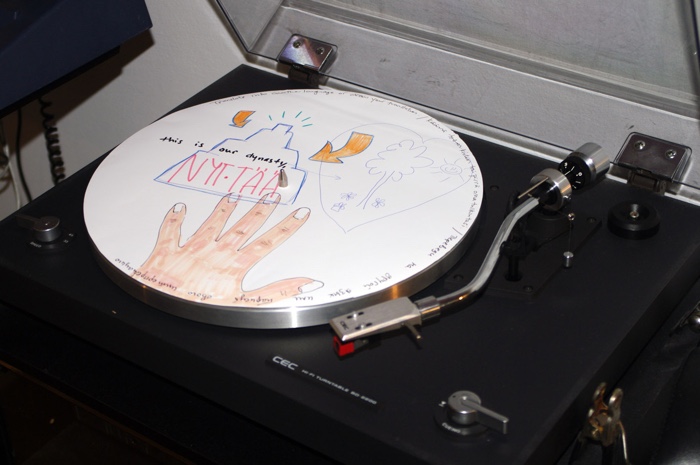
Image from a performance and workshop at Cultura Fest in November 2017 in Helsinki. Photo by Anastasia Artemeva
Together, they collaborate on projects that connect people who would otherwise have very little opportunity to meet, share experiences and debate about questions as diverse as social justice and the challenges of mutual understanding. One of these projects is Let It Out, a series of art exchanges for young people affected by imprisonment in Finland and in Russia. The three artists organize workshops and other events where the young people are invited to use art, music, poetry and other creative practices to work together, connect as individuals or simply let their imagination run wild.
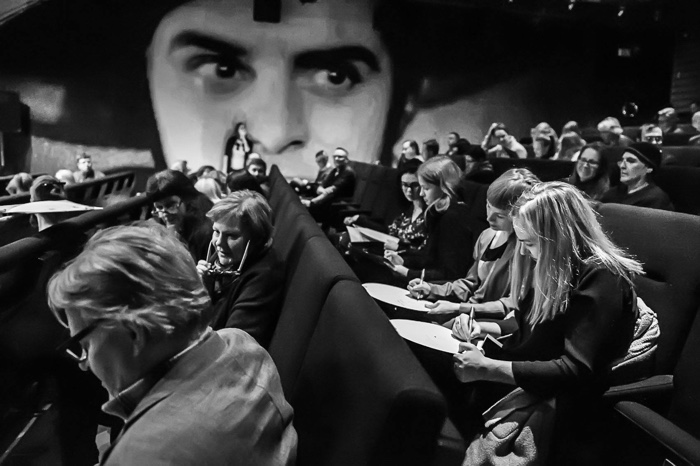
Image from a performance and workshop at Cultura Fest in November 2017 in Helsinki. Photo by Svetlana Mikhailova Ostonen
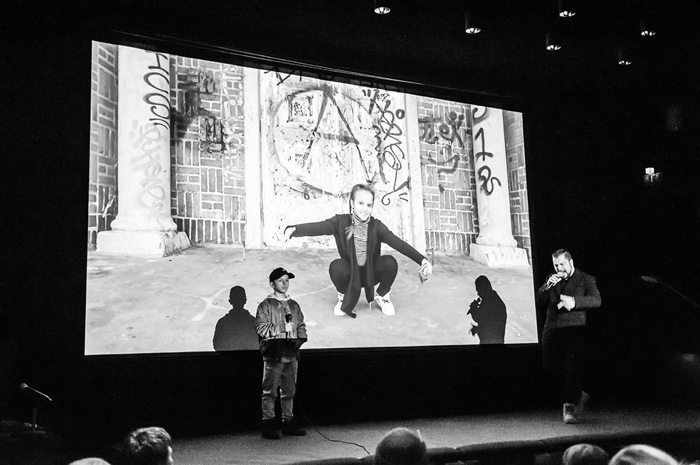
Image from a performance and workshop at Cultura Fest in November 2017 in Helsinki. Photo by Svetlana Mikhailova Ostonen
You (Anastasia, Henkka and Arlene) seem to have very different backgrounds. So how did the three of you meet and decide to ally on the Prison Outside project? How do you complement each other on this project?
Arlene: Anastasia and I met years ago in Helsinki, as we were both exhibiting in a group show. This was back in 2014. I think Anastasia took the lead and contacted me about making art with children. Our projects always have seemed to run parallel and intersect with each other’s, either thematically or spatially. I was preparing for an installation at Performanssifiesta and suggested that Anastasia show her work there. That was the first time I heard about her prison project. Who knew years later that Translation is Dialogue (TID) would find itself snuggling with Prison Outside.
Anastasia: I met Henkka in a peer support center for released prisoners in Helsinki. He used to come there to play pool on his lunch break from studying to become a social care worker, while serving the last six months of his prison sentence. In Finland, in most cases, the last six months of a prison sentence are completed in an “open prison” – an institution with less strict rules. I visited this center Redis for many months as an artist researcher, setting up informal art workshops.
Our creative practices are very different, and I also feel that at the moment we have taken on quite different roles. I am perhaps more of an organiser in this project, and Arlene has been developing and will be teaching the workshops to both young people and their mentors. While both Arlene and I are artists, and will curate the visual aspect of the Let It Out exchange project, Henkka will produce the music. He has been working with correctional institutions and directly with youth on the street for some time now. His experience in composing and teaching music is an integral part of the project.
Arlene: I think what also makes us work well as a group is how passionate each one of us are about using art practice as a means of self expression. This probably stems from our own experiences on how art has touched us personally! Survival skills! Also, I can just plainly say that I always get loads of energy when talking about the project with Anastasia and Henkka!
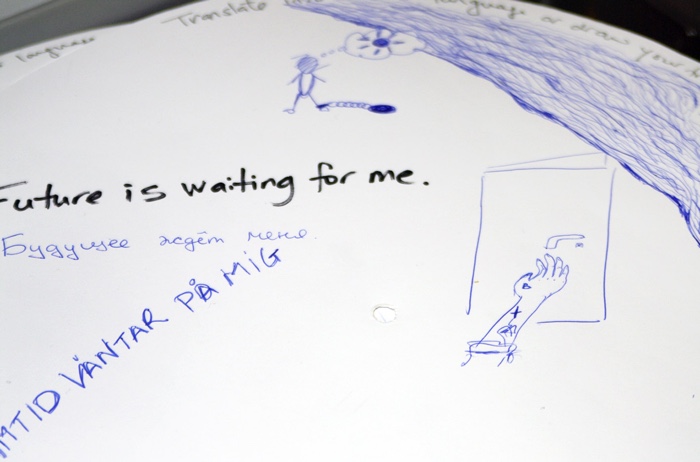
Image from a performance and workshop at Cultura Fest in November 2017 in Helsinki. Photo by Anastasia Artemeva
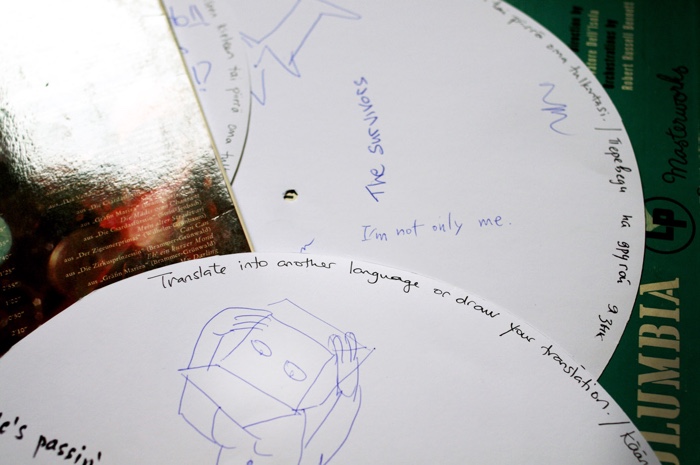
Image from a performance and workshop at Cultura Fest in November 2017 in Helsinki. Photo by Anastasia Artemeva
How and why did you decide to explore the world of prison in connection with artistic practices? Did you have particular affinities with the issue of incarceration (if the question isn’t too personal)?
Anastasia: A few years ago, my close friend was sentenced for a very serious crime, which came as a big shock for me. This made me question my understanding of badness and goodness, and I feel that prison is a phenomenon by which as a society we draw a line between the bad and the good.
Henkka: I have been in state care since I was 2 years old, back and forth between over 20 different institutions. When I was 13 I started to write and perform music, and music saved my life. I had to go to prison for two and a half years when I was eighteen. And when I was released, that nine months was the first time in my life when I was free. And now I have served my life sentence, which was 13 years and 2 months. In total, I am now 34 years old, and I have spent over 15 years in prison and overall 32 years in institutions. Many people have told me that I have no chance, but it’s not true. I made it. I have been building my life, studying, and I want to inspire young people to get off the street and begin to follow their dreams.
Arlene: We all have our own story and personal relationship with justice and making mistakes. When I was 13 I became very involved with Amnesty International, which I have to thank my big sister for introducing me to. I remember at my school there was an Amnesty International club where we would all stay after class and write letters to various governments letting them know that we were on to what they are doing. That was when I first started learning about human rights on an activist level.
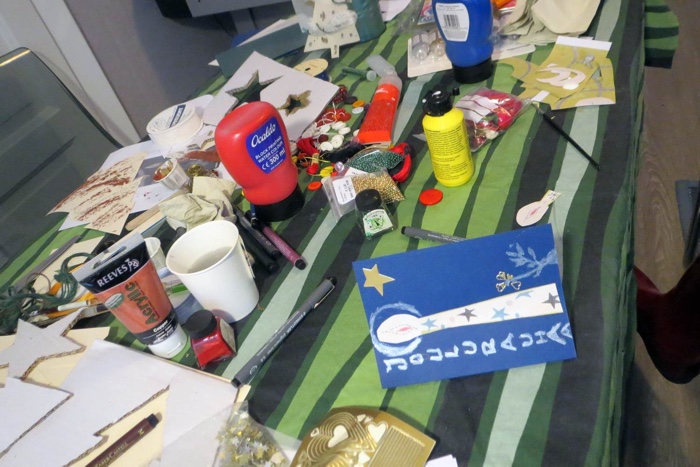
Art workshops in Redis, an open space for ex-convicts in Helsinki, managed by Kriminaalihuollon tukisäätiö, a Finnish non-govermental non-profit organisation supporting convicts, ex-prisoners, and their families. Photo: Prison Space
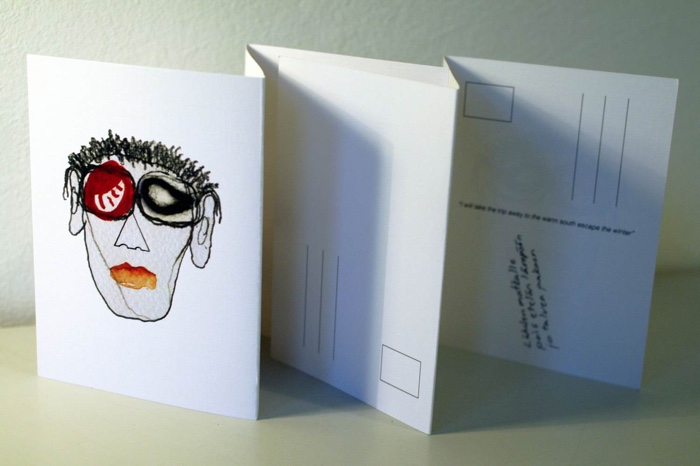
Invisible Neighbours, with Annika Niskanen, Helsinki Prison and Esitystaiteen Keskus performance art center. Photo: Prison Space
Your project “Let It Out” connects (or will connect) young people affected by imprisonment in Russia and in Finland. They are invited to exchange artworks, lyrics, and short videos, produced during workshops with artists and musicians. Their exchange will be facilitated using rap composition and translating techniques. Now i can guess the importance of music in this project, maybe as a language of resistance, social gathering and open expression. I’m curious about the role that the translating techniques will play in Let It Out. Is it just a matter of translating from one language to another or is there something more to it?
Arlene: Happy you asked about that! Since you mention it… TID uses the framework of intersemiotic translation as a means to understand what happens in the communication and creative process between different mediums all carrying their own system of codes. Let’s see how the groups take to it, but what I hope to integrate into these workshops in the prisons is to experiment with different translation techniques as a means to guide their creative process. This could help articulate what they would like to say, but also what is being communicated.
Now i’d like to have a look at the locations: Russia and Finland. I know very little about incarceration there. I do know that Scandinavian prisons are praised for the relative quality of life they offer to prisoners and guards. As for Russian penitentiary system, it doesn’t have a very good reputation. But then all i know about it comes from wikipedia, Pussy Riot and those books about Russian Prison Tattoos. Do you think my rough summaries of prison conditions in both countries need to be refined and nuanced?
Anastasia: Yes, penitentiary systems are different in Russia and in Finland, each with its own challenges. However, for me, this project is not about looking at these systems as such, but rather at the support structures that exist for incarcerated people and ex-convicts in these countries. I am also interested in the way society relates to ex-convicts, the stigma people live with once they leave prison. I feel also that the international community has this idea of Russian prisons as places of some kind of horror show, or a gangster movie.
As much as the conditions are, for sure, challenging, I encourage us all to look closer and see individuals, men, women and children, people for whom this is an everyday environment, in which they live and create. We are not here to showcase these systems, but rather encourage people to communicate and see the people beyond these systems.
Henkka: In Finland there are different types of prisons, some stricter than others, and then in Russia it is even stricter again. In our work we are trying to and find ways to create a connection between people in and beyond these institutions. Having an “insider” experience creates trust and makes it easier to communicate and understand the people behind bars.
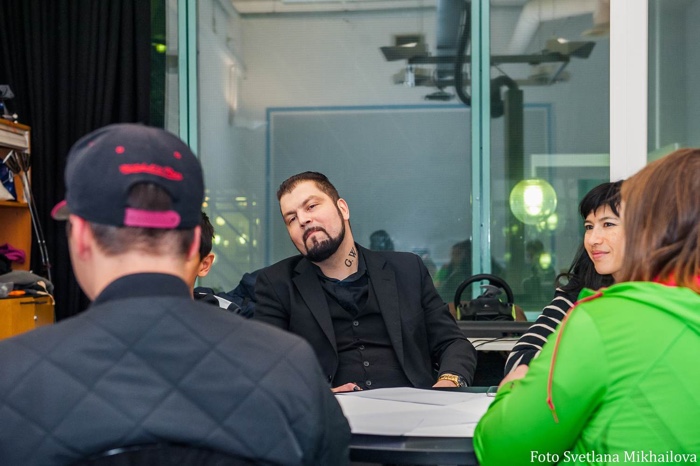
Let It Out workshop. Photo by Svetlana Mikhailova Ostonen
Apart from the fact that Anastasia was born in Russia but currently lives in Finland, are there other reasons why you wanted to work with these two countries in particular? How easy or difficult is it to work with countries that have such different penitentiary “cultures”?
Anastasia: Russia and Finland are neighbouring countries, yet with very different prison systems, and different cultural relationships with incarceration. Both contexts have their own challenges. It is hard to navigate between institutions, particularly within such a stigmatised issue, but that is what makes our project unique. In my experience, cross-border public dialogue about prisoner support and rehabilitation is very limited. These issues seem to be at most only discussed within the very close circle of prison service professionals or academic research. I want to open it to the larger public, to find ways for solidarity and understanding.
What do you hope to achieve with Prison Space? Who do you think might be affected by it? And what do you think participants will take from the project?
Anastasia: Prison Space the website is designed for the general public. I also hope that it will act as a resource for creative practitioners, social workers and volunteers to share experiences and techniques for working with people affected by imprisonment. My dream is to open up a dialogue and challenge the stigma attached to incarcerated people and ex-convicts. With Let It Out project, in particular, I hope young people will investigate their experience of life when their freedom is restricted, express themselves, and share their creative processes with each other and with a wider public. I want them to know that there are others who have perhaps made decisions that have lead to incarceration, that no matter what country and circumstances you are in, your voice is valuable and you are not alone.
Henkka: I want the people who participate in Let It Out (the art exchange project designed for youth in Russia and Finland) to notice and value their talent and to have more self-confidence in expressing themselves. It is important for me that we do this project not for ourselves but for others. I believe that young people begin to understand the possibility of pursuing a career in creative profession even from one session. Young people I meet on the streets of Finland often have no plans or dreams for the future. Music and art workshops can affect their whole life, and can be a first step in becoming a professional musician or artist. Even if this only happens to one person, then we have achieved more than we could have hoped for. Myself I grew up in an environment where there are no big dreams, and I want to create a space where, by working hard, you can dream big, apply your talent, and achieve your dream.
Arlene: Following similar dreams and hopes with the project as Anastasia and Henkka, I hope that this exchange can also show how much one’s voice is a source of inspiration for somebody else. TID started as creating a space to show the translation process and how we are in constant translation. The contributed artworks are an inspiration and source for more points of self expression. Without the participants and without the artworks, we would just wallow in stillness, but they create movement and excitement within themselves and with others.
Why do you think art is a good medium to establish bridges and communication between the inside and the outside of prisons? Rather than activism for example? Or do you regard the project as form of activism?
Arlene: Making art gives me freedom and space to explore, make mistakes, and experiment. If I could share that with others and they would feel the same, great! If not, at least they tried something new.
Anastasia: For me personally this project is not about representing the community of incarcerated people, neither is it a fight, but rather a gentle, long-term journey to bring together folks of different walks of life. I enjoy art-making as a way reach out and learn new possibilities for communication, and this is what I hope will happen in this project. I am incredibly lucky to be able to do this as part of my artistic work.
Henkka: No, I don’t view this project as activism. An important aspect I’d like to mention is the therapeutic experience that art provides for people in incarceration.
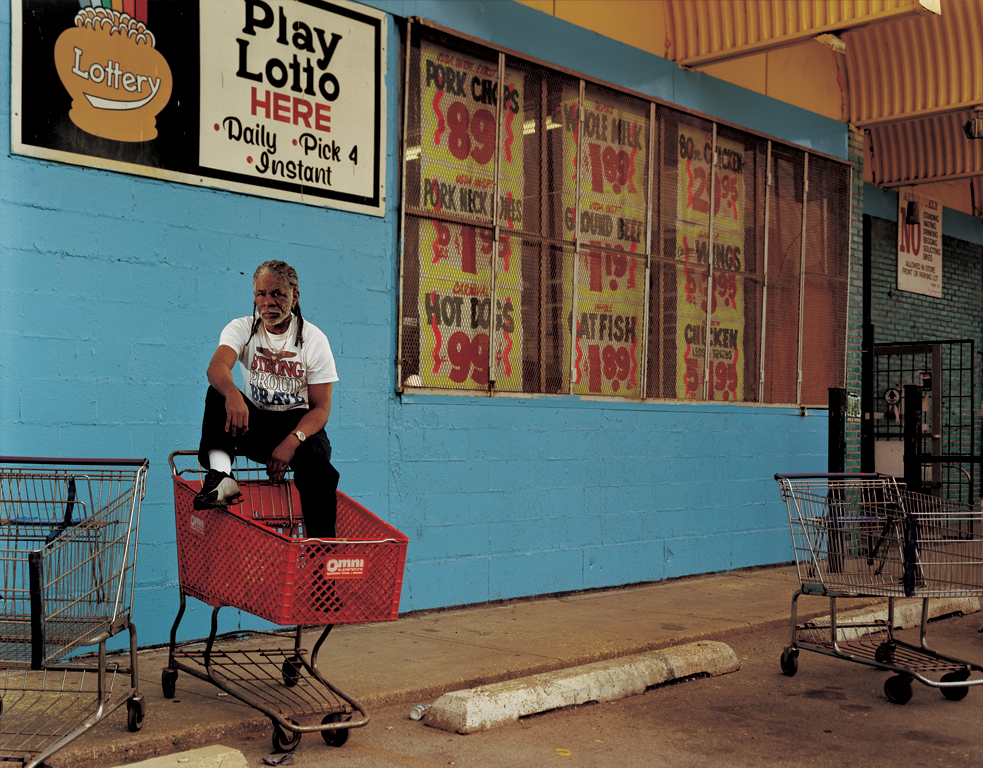
Taryn Simon, Ronald Jones, 2002. Scene of arrest, South Side, Chicago, Illinois. Served 8 years of a Death sentence
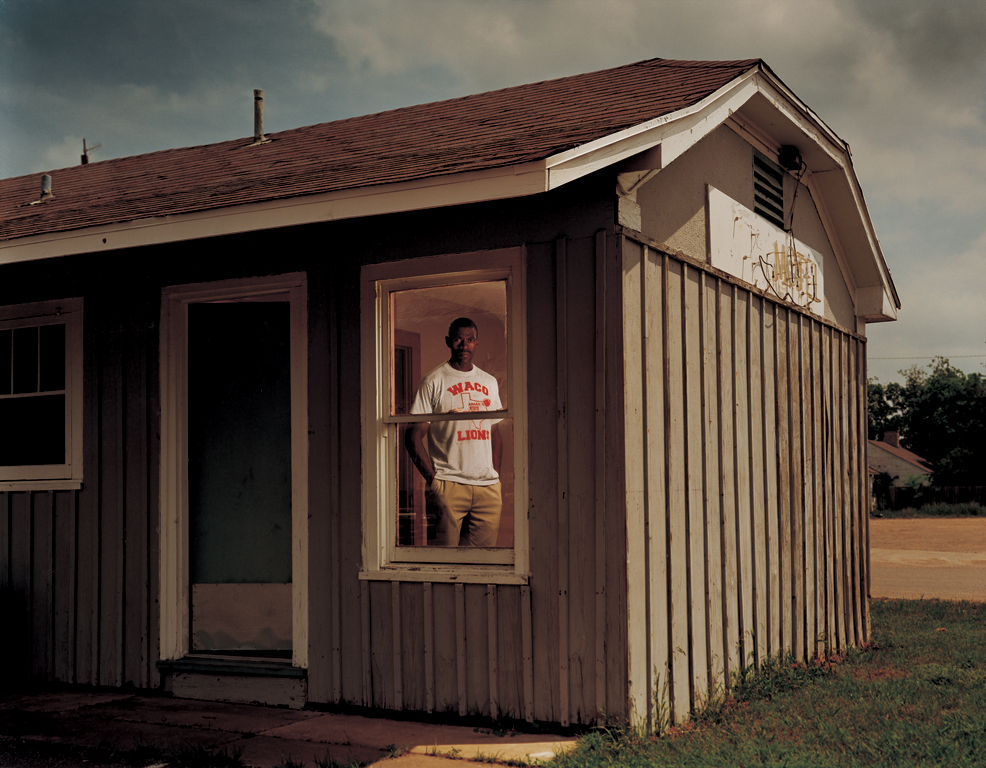
Taryn Simon, Calvin Washington, 2002. C&E Motel, Room No. 24, Waco, Texas. Where an informant claimed to have heard Washington confess. Wrongfully accused- Served 13 years of a Life sentence for Murder
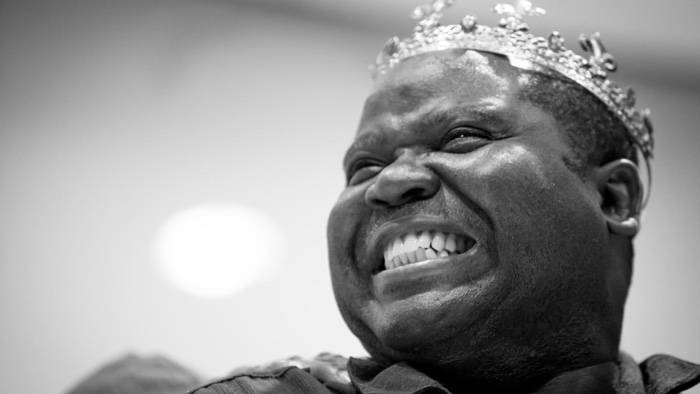
Edgar Evans. Photo by Suzy Gorman, courtesy of Prison Performing Arts. Photo via This American Life
Do you know of other artistic projects that have had some impact on the life of the people affected by incarceration?
Arlene: That’s a bit of a tricky question because how can we measure impact? I’m a huge fan of talk radio and especially for the show, This American Life. I had heard this one episode, where “Over the course of six months, reporter and This American Life contributor Jack Hitt followed a group of inmates at a high-security prison as they rehearsed and staged a production of the last act—Act V—of Hamlet” (2002). What the inmates say about their theatrical work is amazing. What Prison Performing Arts does is build empathy, forgiveness, and awareness with the actors.
Another art project that has been very thought provoking for me is Taryn Simon’s photographic series The Innocents (2002), which “documents the stories of individuals who served time in prison for violent crimes they did not commit.” I was very much affected by this project because it made me think about not just the judiciary system, but I was feeling torn because I couldn’t imagine what these people must be going through. Being back in that place they were wrongfully committed.
What’s next for the project? Where is it going to lead you in the coming months?
Anastasia: In November 2018 we will have an exhibition of artworks by people affected by imprisonment, and a symposium on the subject of art in prison.
Arlene: I am excited for that and also am looking forward to making art and music with young artists in Finland and in Russia!
Thanks Anastasia, Arlene and Henkka!
Related stories: Inside Private Prisons. An American Dilemma in the Age of Mass Incarceration, Prison Gourmet and YOUprison, Some thoughts on the limitation of space and freedom.
